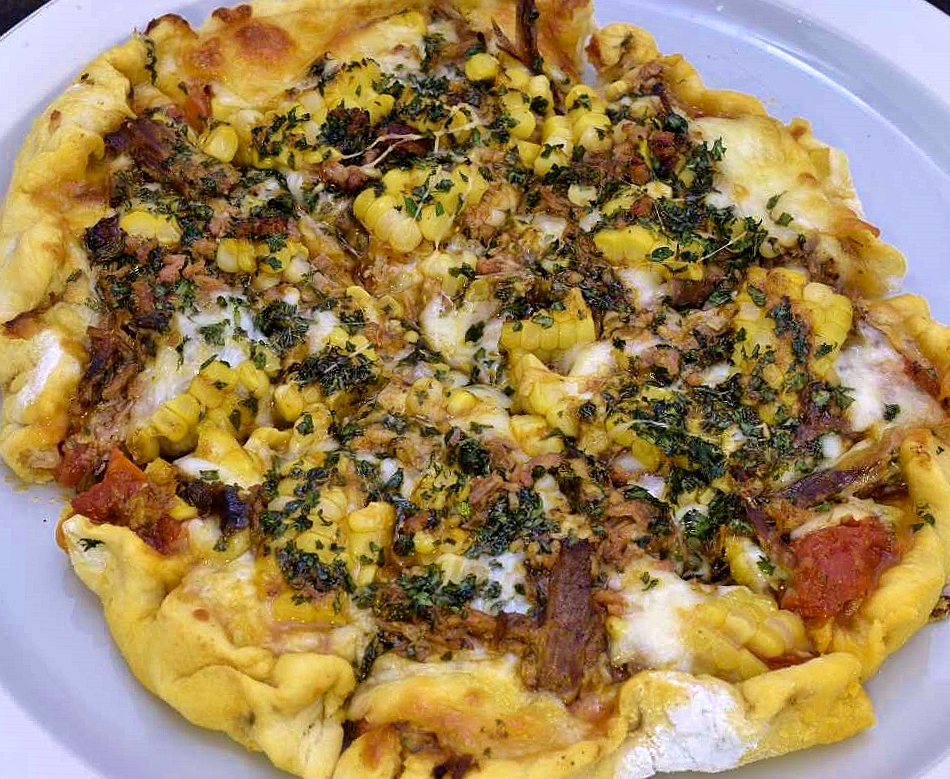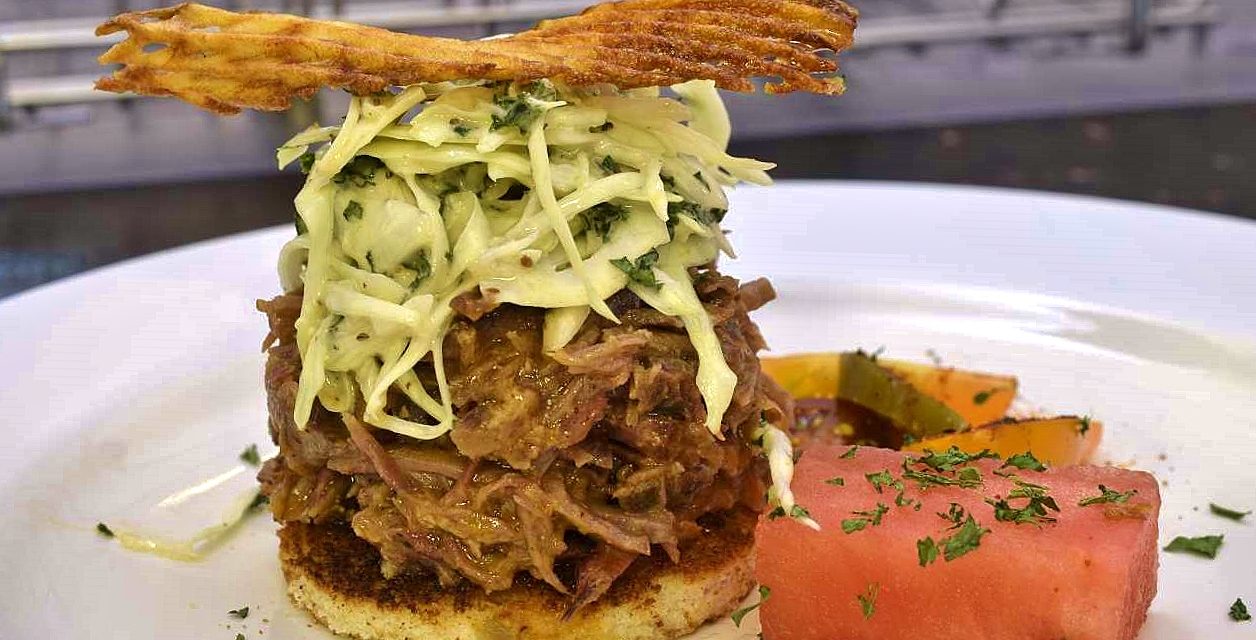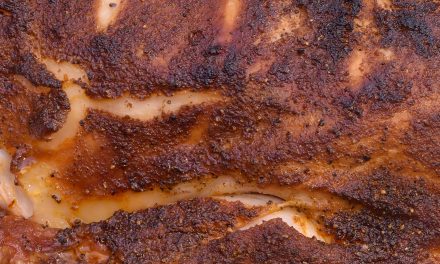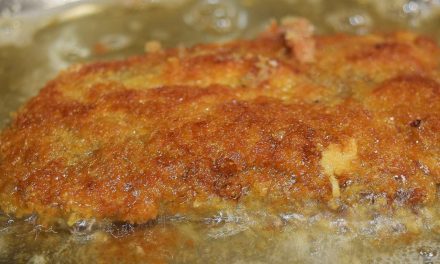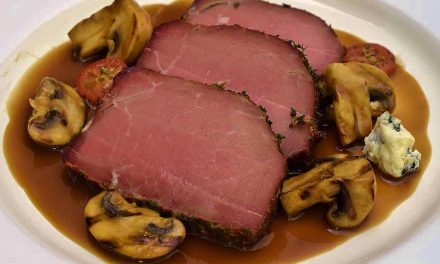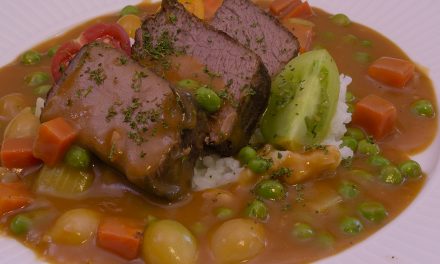When the top is the same as the inside
This mode of preparation specifies the use of beef “top round,” aka “inside round.” Frequently and deceptively marketed as “London Broil” in the butcher’s case (there is no such cut of meat), it comes from a heavily used muscle of the hind leg and is typically quite tough. It can vary widely in appearance because of the large size of the primary muscle. A pre-cut piece of any shape or size ranging from 2 lb/1 Kg up to 7 lb/3 Kg can be prepared using this method without altering the time or temperature parameters.
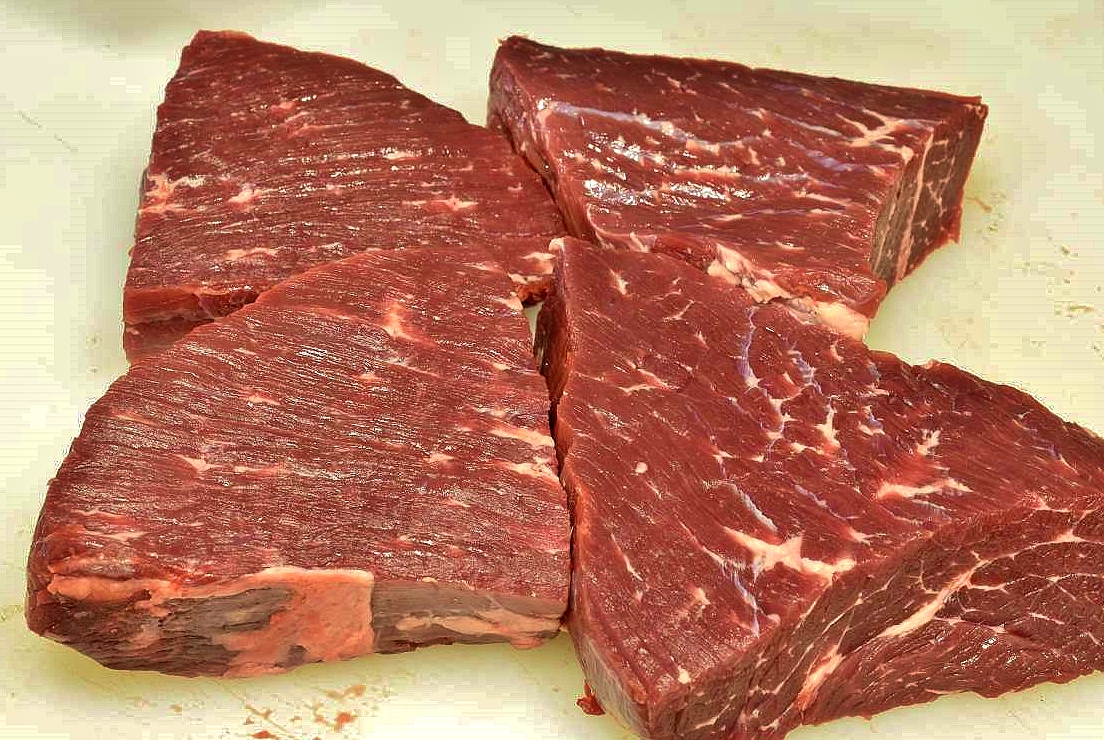
Other “economical” cuts can also be prepared using this model, although the time component may require adjustment to account for variations in collagen levels/toughness. As always, temperature/time determines the level of tenderness, but time cannot be used to MEASURE tenderness–the good news is that the skill can be easily acquired. We recommend using the method linked HERE. For more detailed information on beef top round and its unique characteristics, click the link HERE.
Starting at the end
People familiar with my recipes on Lipavi.com and the commentary here and on Facebook know that I almost ALWAYS insert sous vide processing before I move on to subsequent steps. The model we will describe today temporarily turns that practice on its head. More on that in a moment.
Rubbing the right way
Any rub will work. You can make your own. We have recipes here on the site. Most people have a favorite brand that appears on the shelves at the store. One thing to consider: Most proprietary rubs are at least 90% salt, so the eye-catching labeling predicates a gigantic markup in price–up to 600%. It’s worthwhile learning how to make your own rub.
Here’s the rub that I improvised for this presentation:
Paprika, 2 Tablespoons.
Nori powder, 1 Tablespoon.
Ground shiitake mushrooms, 1 Tablespoon.
Hondashi granules, 1 Tablespoon
Knorr chicken bouillon powder, 1 Tablespoon.
Garlic powder, 1 Tablespoon.
Ground black pepper, 1 Tablespoon.
Ginger, dried, 1 Tablespoon.
Sugar, 1 Tablespoon.
Beefinitions
Sous vide processing’s many benefits include the conservation and/or capture of moisture content. In the case of Sous-B-Q pulled/shredded beef, moisture must be removed in order to achieve the desired flaky result–hopefully without those juices being inadvertently discarded. For this reason, the refrigerated, 40 F/4 C roast is seasoned and smoked first. The internal temperature of the roast need never exceed 140 F/60 C during this step of the process. At smoker temperatures ranging from 180 F/82 C to 225 F/107 C, this usually takes four hours or less for a roast weighing up to 7 lb./3.25 Kg.
Very little moisture is surrendered during this step, the flavor of smoke is effectively imparted and the surface of the roast is fully caramelized/Maillardized. Other than the salt that it contains, the flavor of the rub cannot penetrate the surface of the meat–this is a basic assumption verified by scientific fact.
The primary reason for the pre-seasoning process is is to give us a head start on the development of the Sous Jus. Smoking in advance also contributes the characteristic flavor without the risk of drying out the meat, which could occur if the processes were reversed. Finishing the meat to the shredding point in the smoker itself runs the risk of damaging the surface of the meat to a point beyond the desired desiccation.
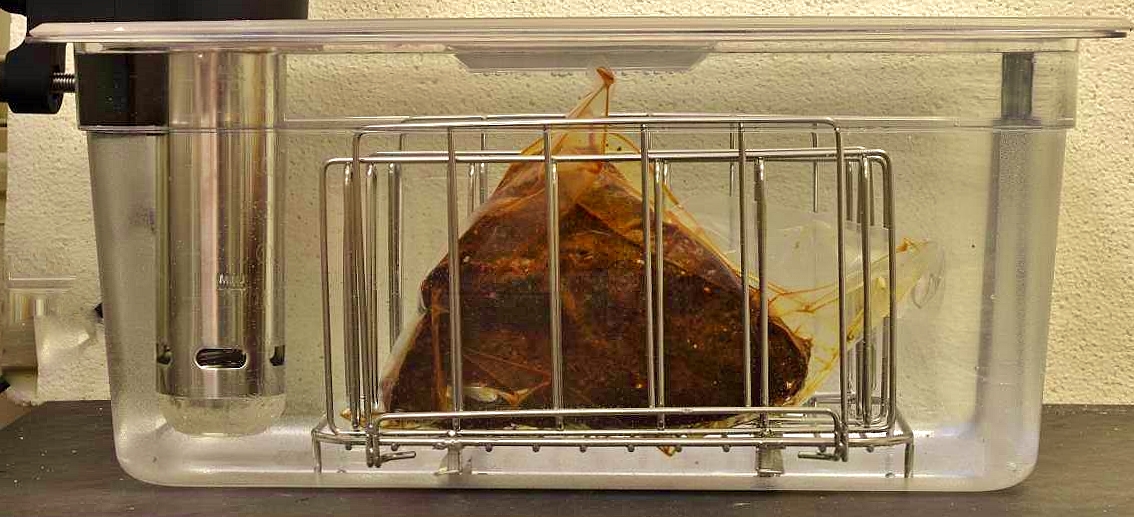
After smoking, the meat is vacuum sealed immediately and staged into the pre-heated sous vide bath. I usually avoid temperatures higher than 150 F/66 C for sous vide processing of proteins–again, to retain and preserve moisture. In this case, we want to be more aggressive towards moisture removal and collagen conversion–top round is one tough cut of meat. Pursuant to that, we preheat the sous vide bath to
165 F/74 C, and set the timer to 24 hours.
This is a long time at such a high temperature, but again, tenderness is measured not by a chronometer, but by our tactile senses. Results may vary, but don’t smoke your top round on Saturday morning and expect to pull it out of the bath on Saturday night.
Preservation of perk
As another benefit of sous vide, none of the precious juices are lost because they are trapped in the sous vide pouch.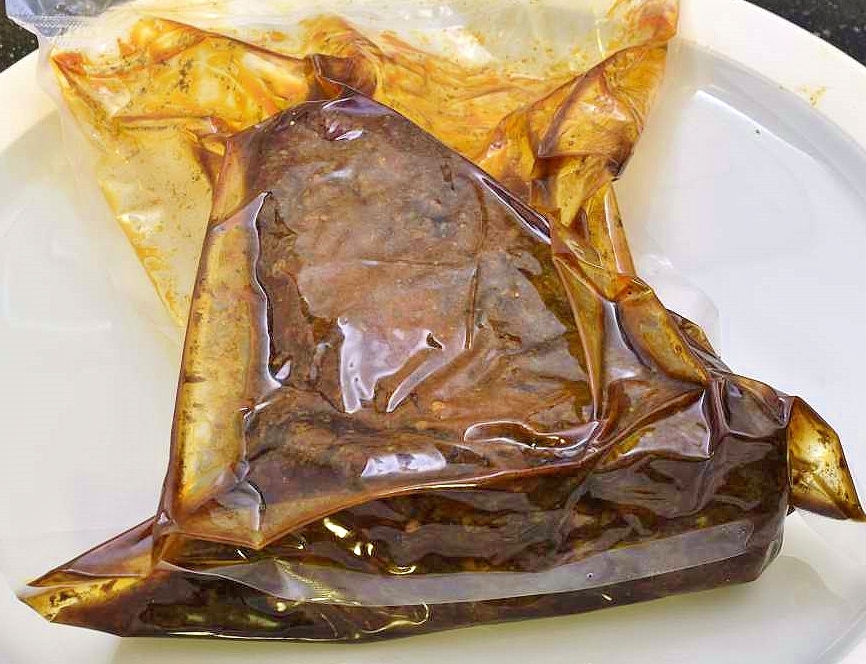
Those juices have a tremendous amount of flavor which would otherwise be either partially or completely lost using traditional low and slow smoking methods.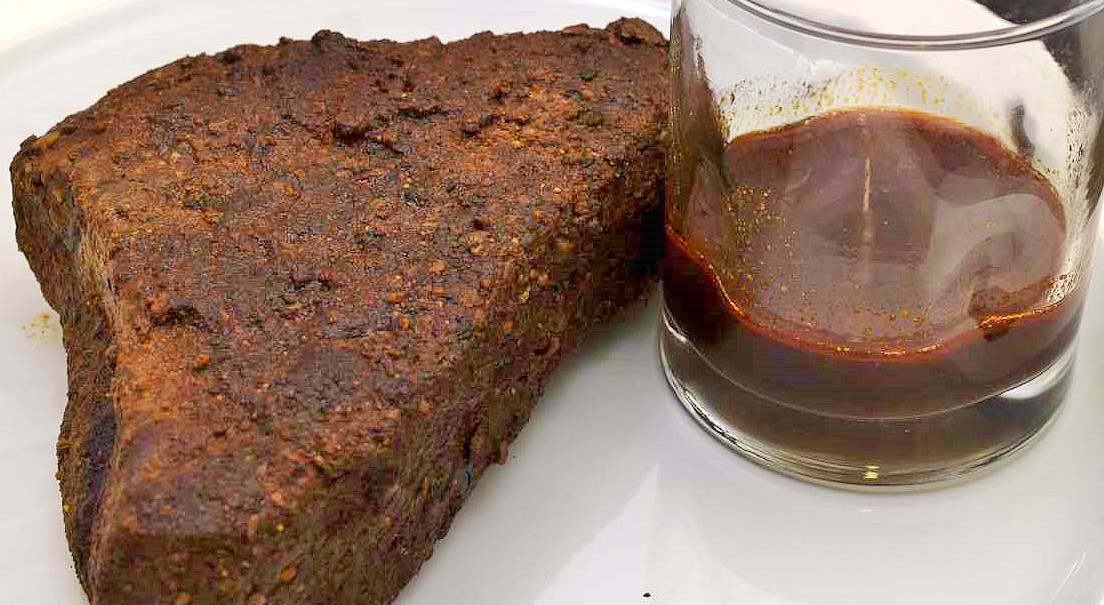
Once enough collagen has been converted to gelatin, the juices are harvested separately and the meat can be pulled apart at the seams, as it were.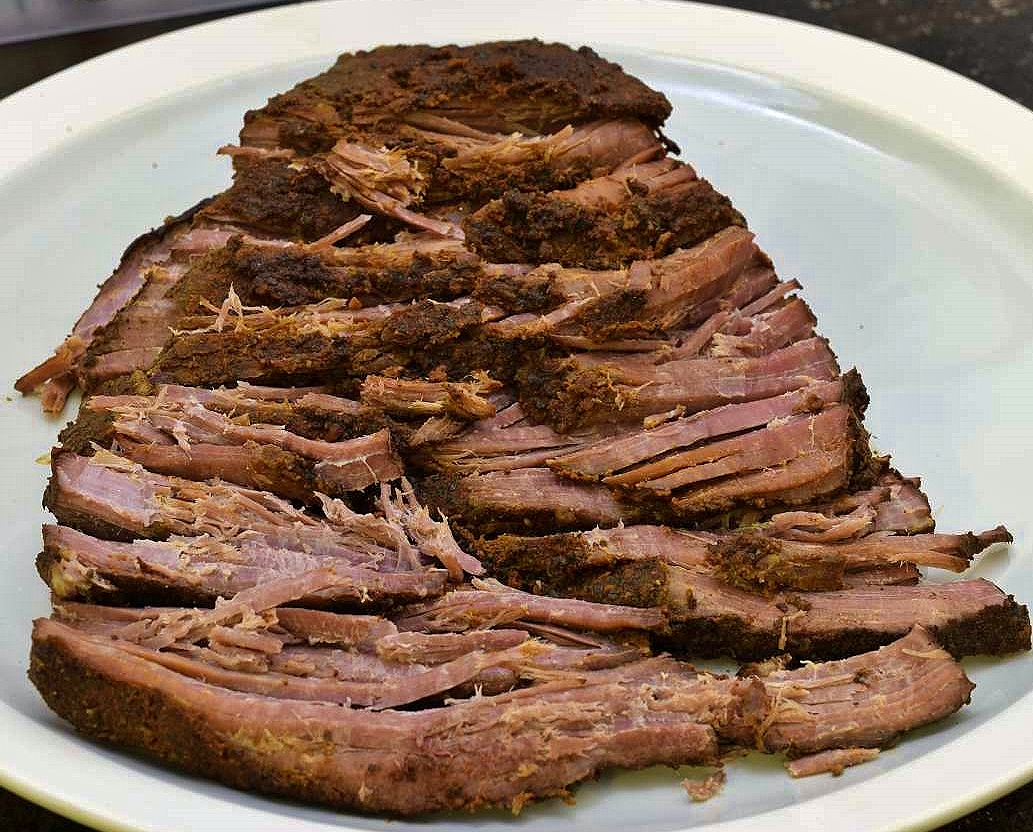
Shredding greatly increases the overall surface area of the meat.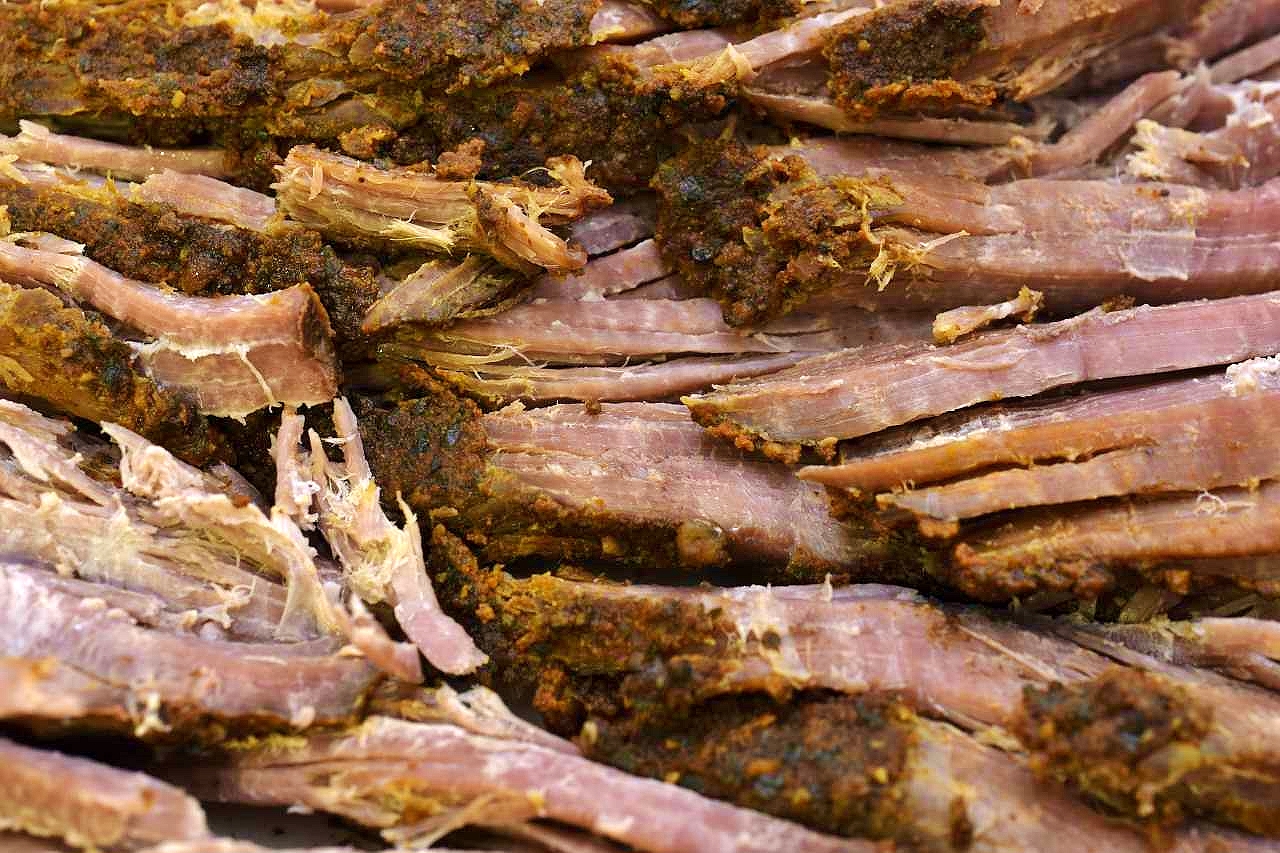
Tripping the sauce fantastic
As the surface area increases, whatever source of moisture reapplied will cling to every fine fiber of protein, creating the idealized consistency that we all love. There are literally hundreds of versions of sauces applied to pulled meat, each one adamantly claimed by its aficionados to be the only authentic and correct one. Some have ketchup, while others vehemently reject the mere presence or mention of Heinz 57. There used to be only one version of Frank’s RedHot, but now there are numerous incarnations. Tabasco. Sriracha, vinegar, and so on. I love all of them, the open minded route. I have never found a pulled meat sauce/coating/glaze that I didn’t like.
Nothing more bitter than a little lime juice
Hot. Sweet. Hot AND sweet. Sweet and sour. Hot, sweet and sour. What’s not to love? Of course, fat plays a major role in this reconstitution. The fat becomes the dispersed phase in an emulsion with the harvested juices playing the role of the continuous phase. This prevents the end product from seeming greasy. And that’s what we want. The creaminess of butter without the dripping down the corner of the mouth embarrassment.
I don’t know if pitmasters realize that they are creating an emulsion when they combine the natural juices and other liquid flavorings with butter to make their highly personalized sauces. Whether they do or not, we provide explanations of butter sauce fabrication linked HERE (the long version) and HERE, (the short version) that apply. I always use the same method to make the sauces, but I vary the ingredients on the basis of whim.
Bells and whistles
Once you have your shredded beef and your sauce, you are truly golden–you don’t need anything else. But you are going to WANT other things, and that’s the fun part. There is no right or wrong.
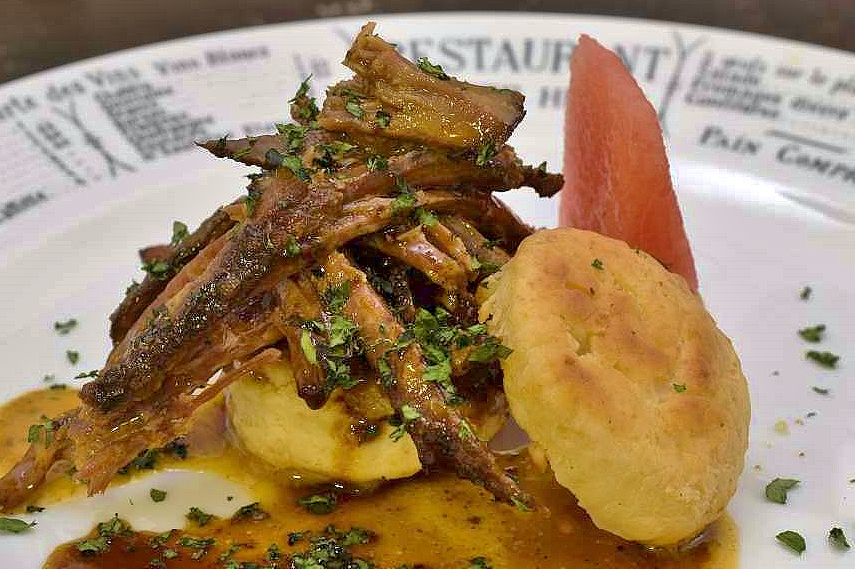
Great on a biscuit. The recipe is on the can of baking powder, no need to reinvent the wheel. The sauce is simply the juices pictured above emulsified with a stick of melted butter. I used the trim from the whole top round that I bought to make a terrific brown stock, which I reduced to the point of thickness. I put a few drops on plates for contrast, and I have been known to dab it on my wrists. That method is linked HERE.
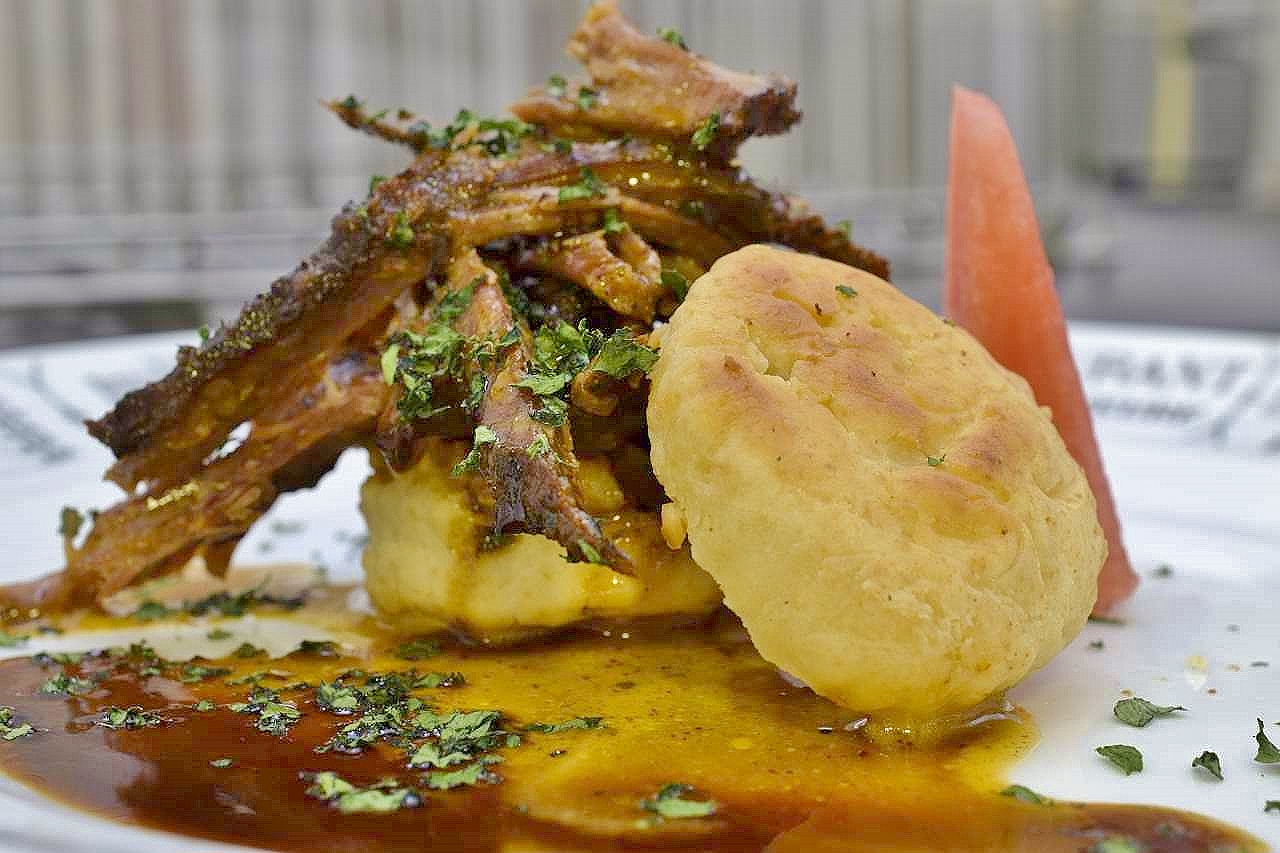
If you really are familiar with my work, you know that I like parsley.
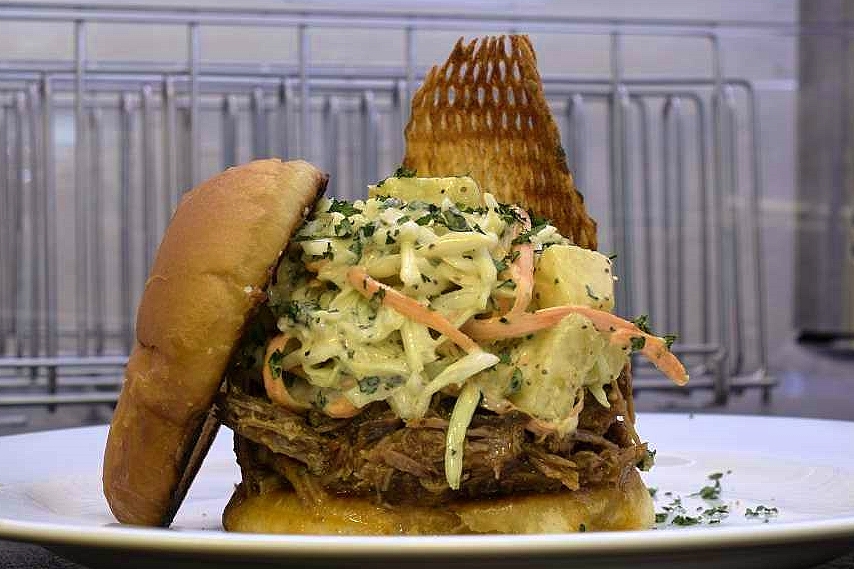
Buns, also available in the market. I cannot make them come out soft like they do, so, I gladly yield. Coleslaw. Let me tell you my story about coleslaw.
Everything we knew is wrong
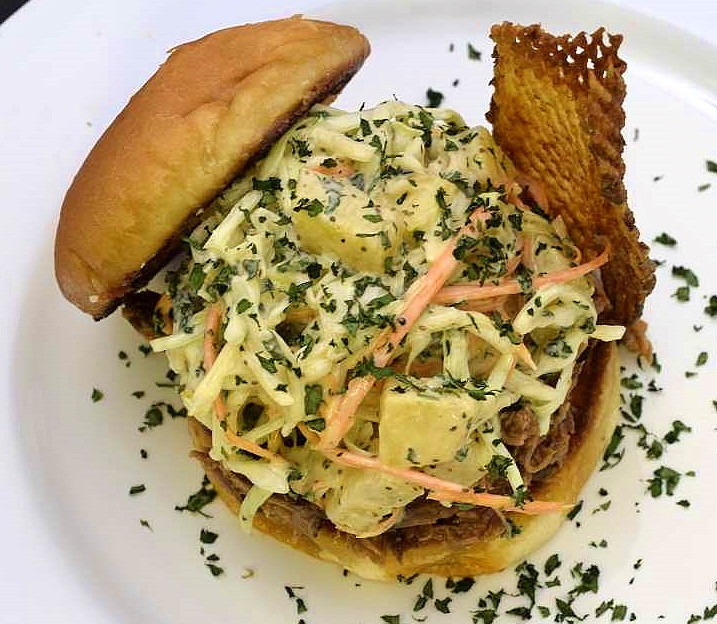
Pineapple in the slaw is sort of a Midwestern touch, but it doesn’t have to be canned. It can be though. Celery seeds–that is definitely Jersey Shore and Philly.
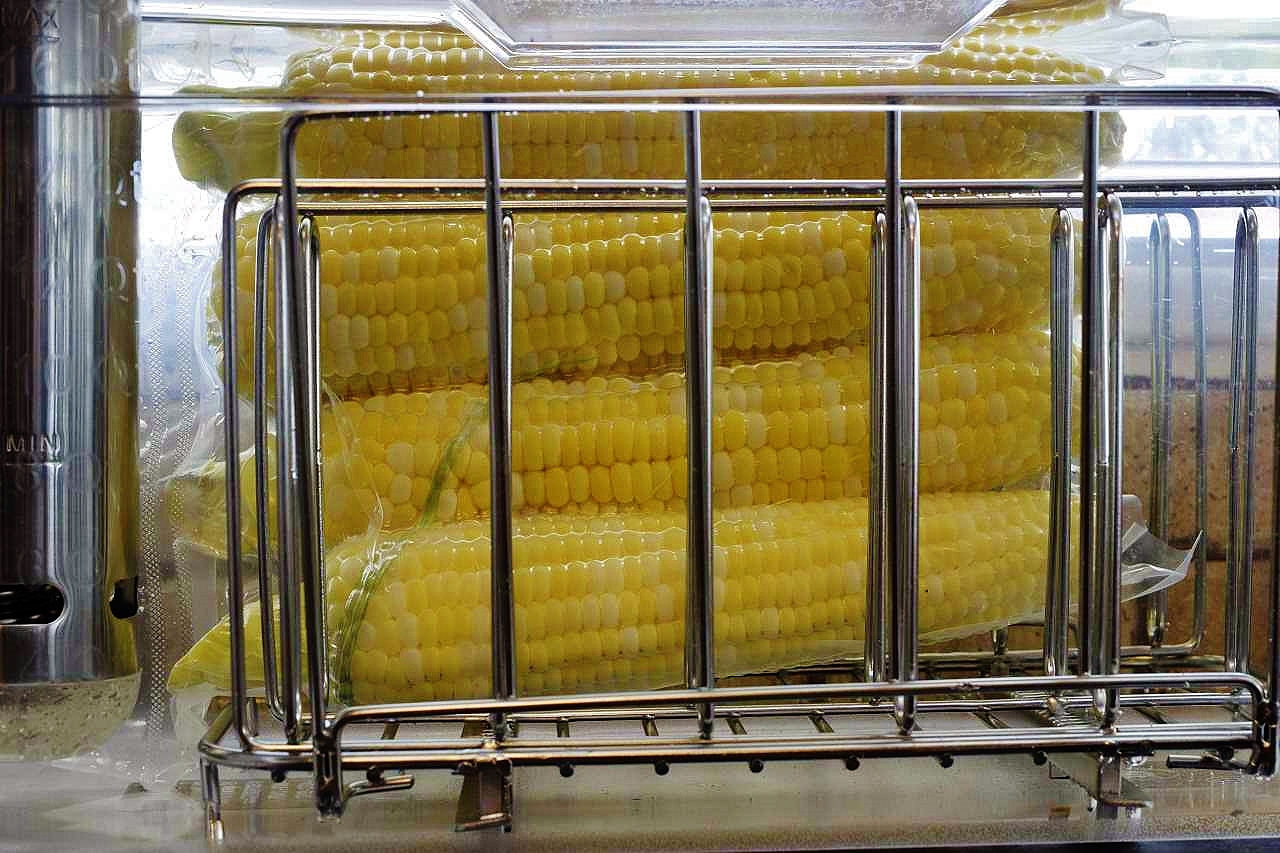
Sous Vide Corn is a thing, and is usually associated with back yard barbecue.
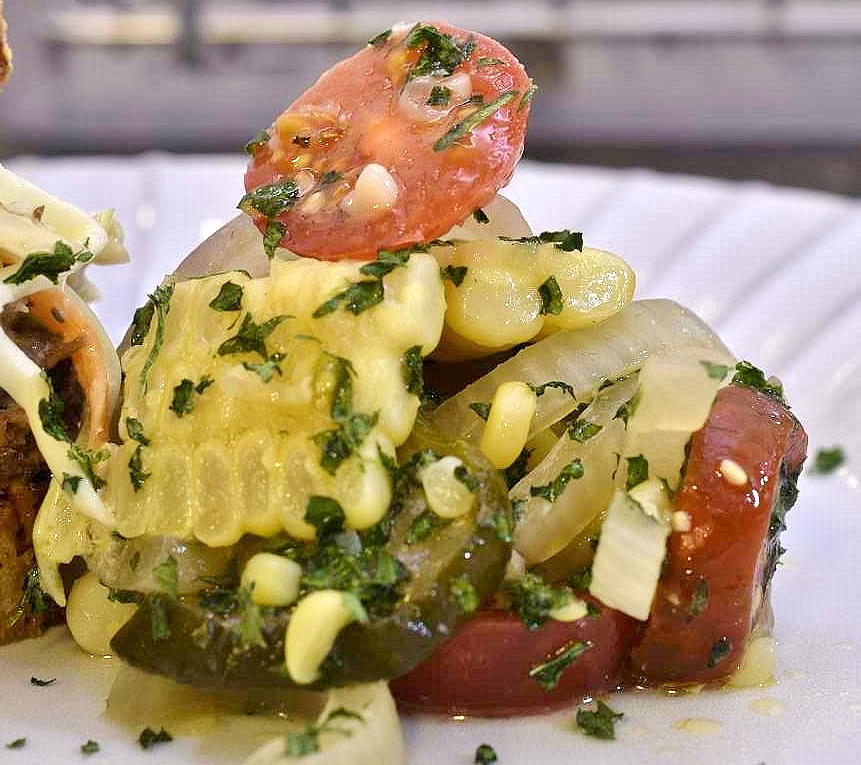
Bread and butter pickles, tomatoes and onions make a simple but vibrant relish to go with.
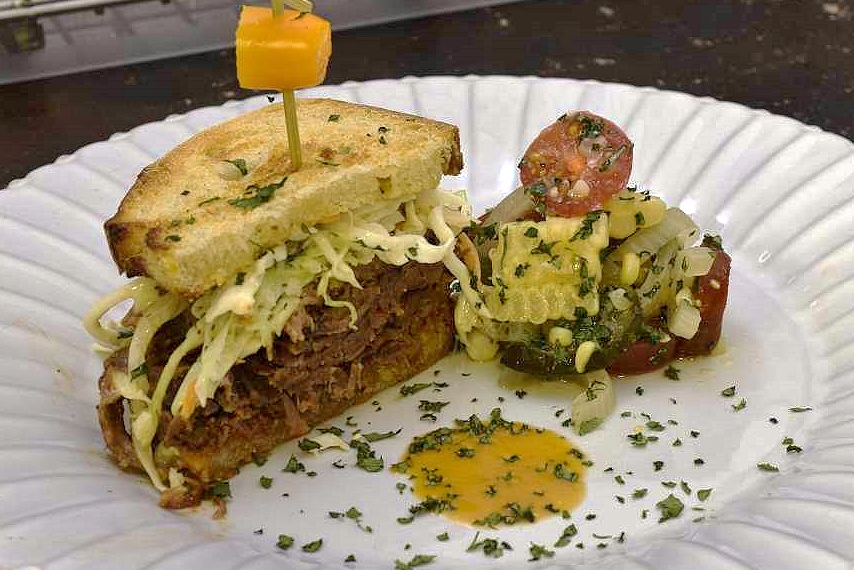
Sourdough? Why not, indeed?
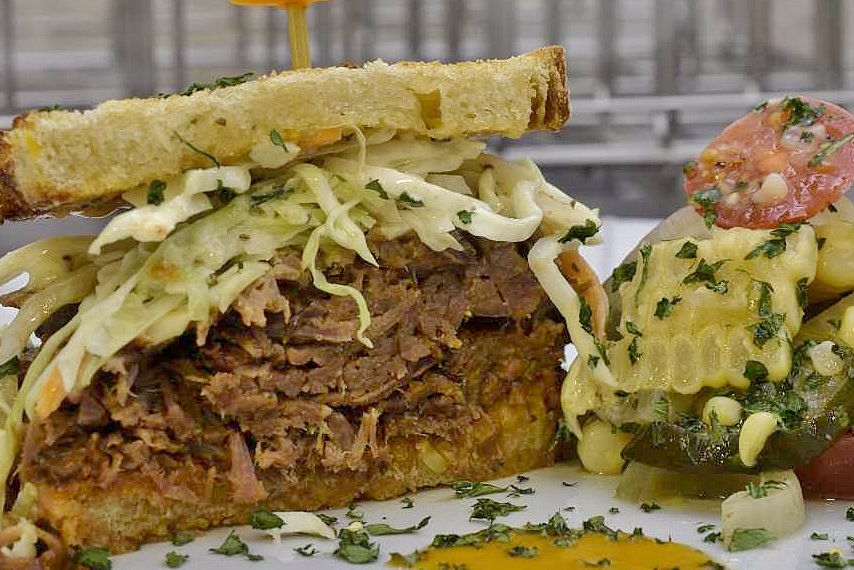
Below: the cubist approach.
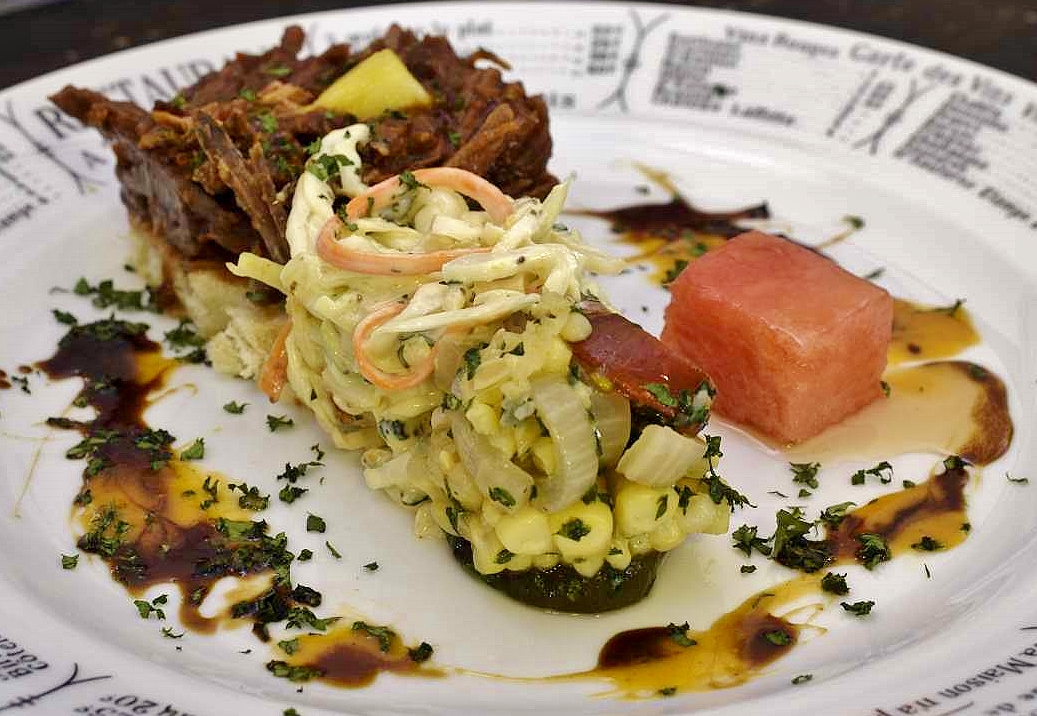
We all know what Balsamic syrup is by now, right?
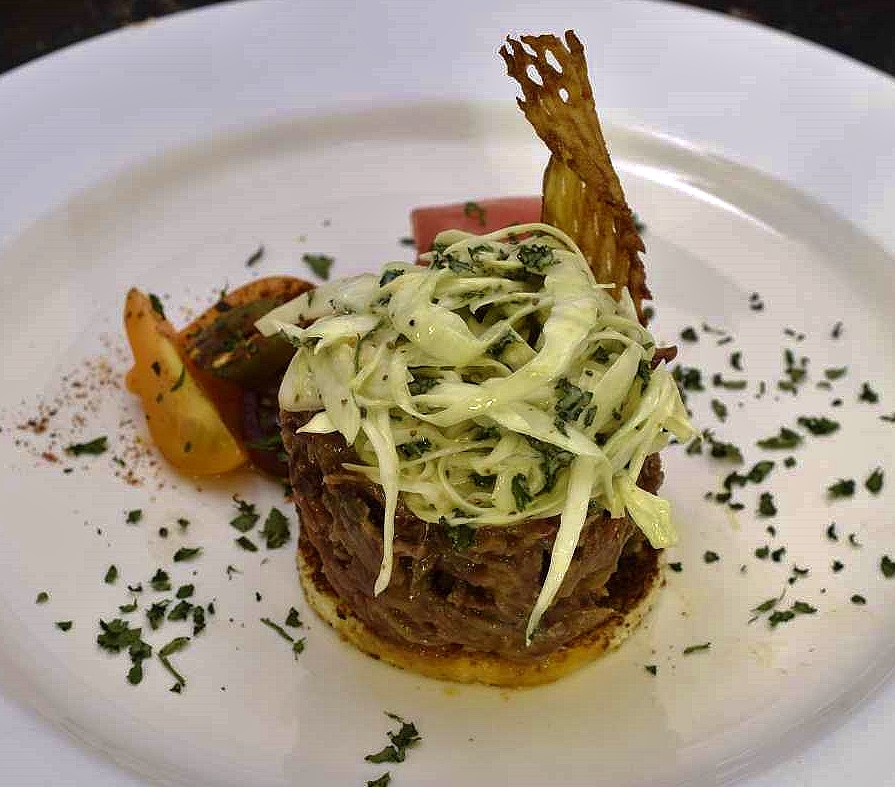
This is really my favorite one. Home made potato chips are easy to make, but the cut requires a mandolin and an oscillating wrist.
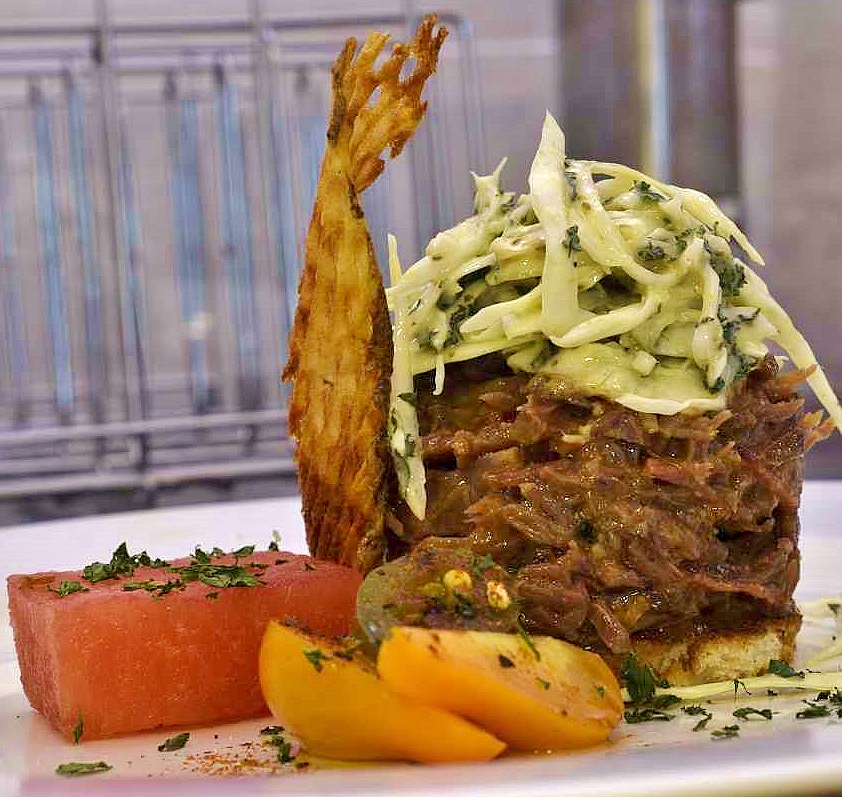
That’s one of those “look what I can do!” things, but you can do this! Watermelon, no rind on the plate please.
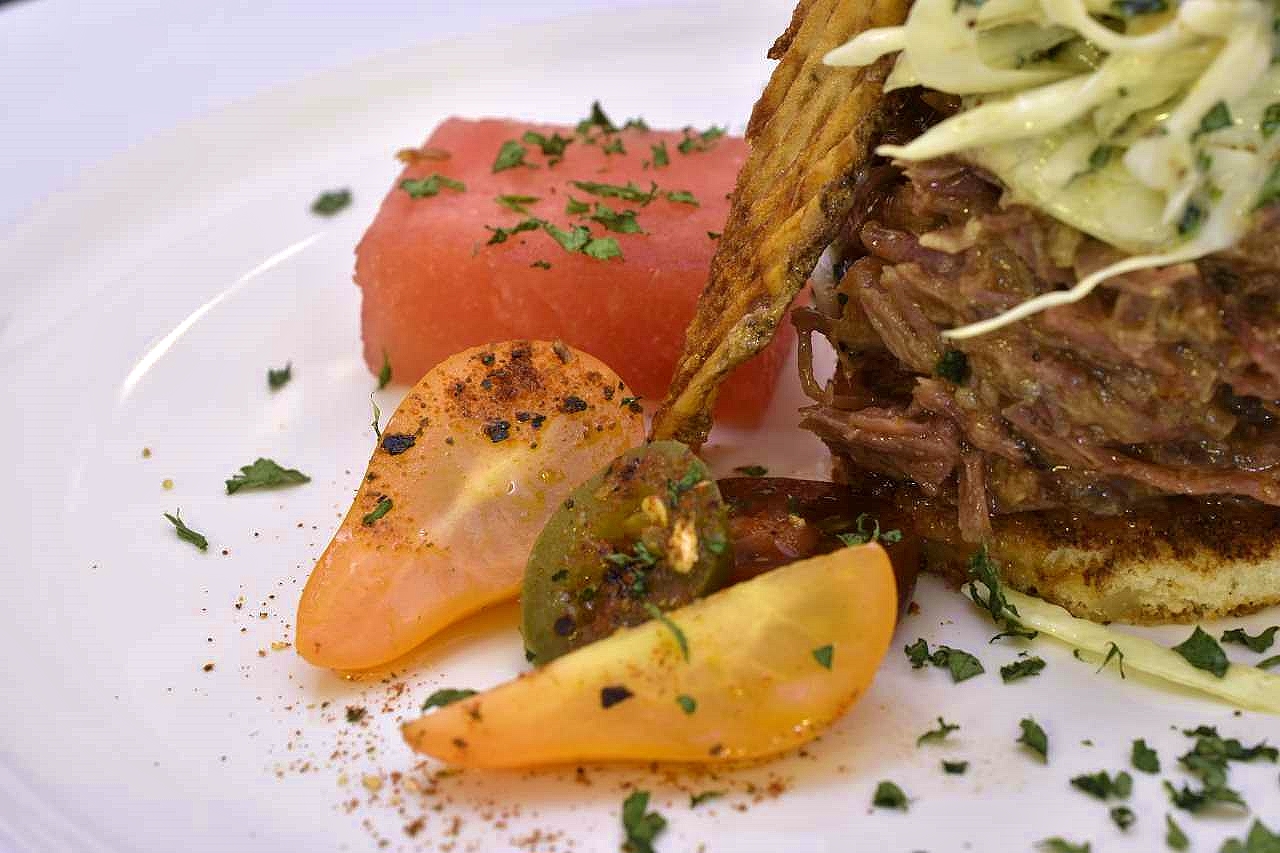
Cherry tomatoes with a little bit of the rub sprinkled on them. We’re working out of the home here.
Norm King
Epilogue
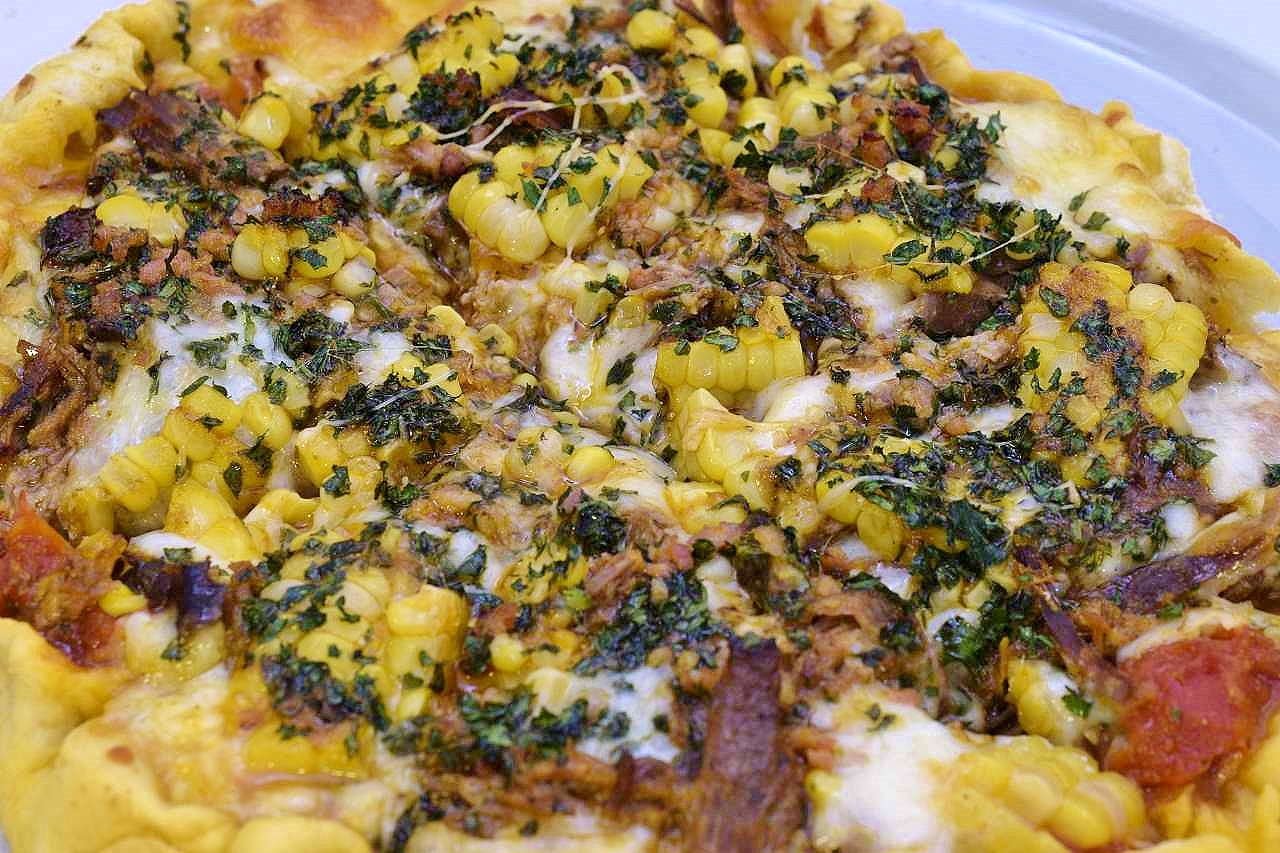
Pulled/shredded beef is great for more than just sandwiches! Along with the sous vide processed corn, it makes a great “Smokehouse Pizza.”
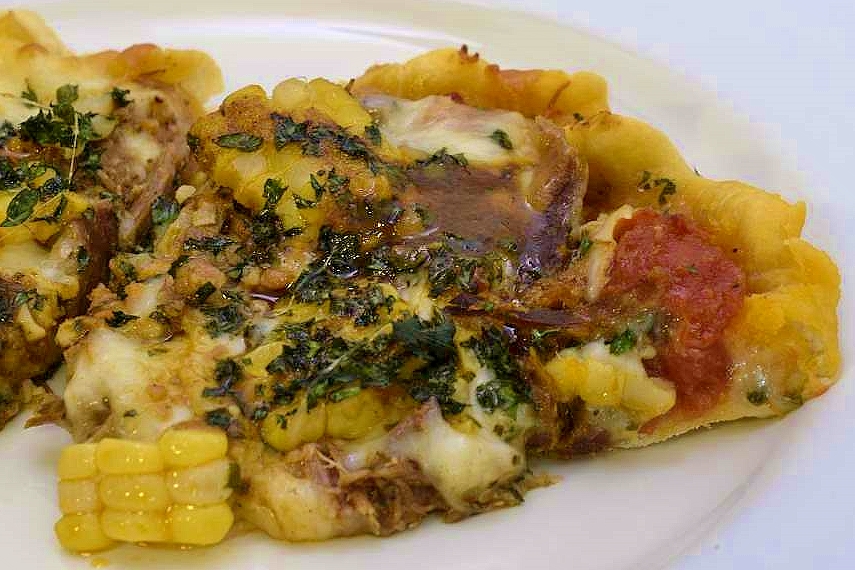
There really is no limit to the possibilities!
